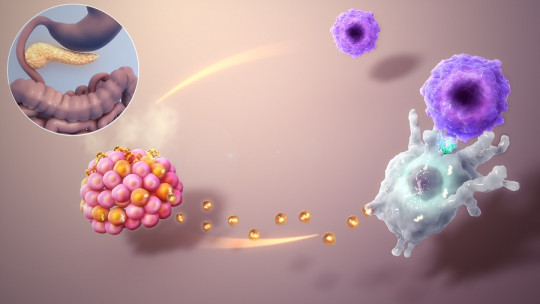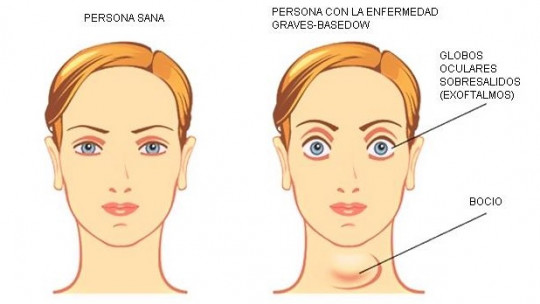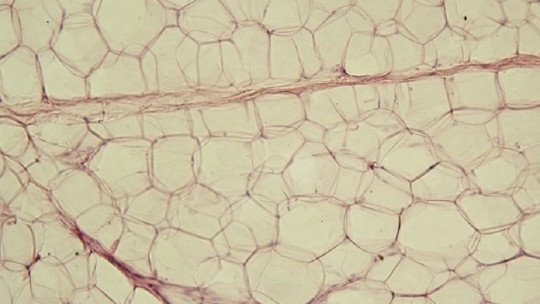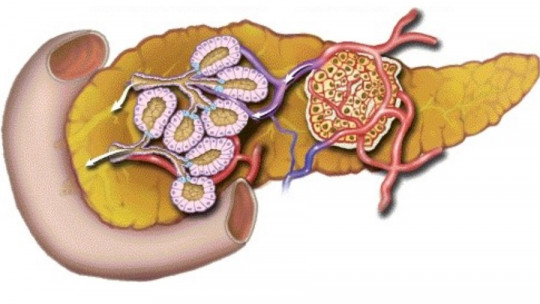We can define hormones as a group of chemical messengers that, together with neurotransmitters and pheromones, directly influence the functioning of organs and tissues at a certain distance from the place where they were generated. All multicellular beings synthesize hormones, including plants.
Although many of the most important hormones are synthesized in the endocrine glands, almost all organs present in animals produce some type of hormone. These interesting biological molecules are stimulated or inhibited by other hormones, plasma concentrations of ions or nutrients, neurons and mental activity, and environmental changes, among other factors.
Thus, a kind of “biochemical cascade” is produced that responds to stimuli both intrinsic and extrinsic to the individual. Today we come to talk to you about the adrenocorticotropic hormone, one of the most important in terms of stress and the management of extreme situations Do not miss it.
What is adrenocorticotropic hormone?
From a physiological point of view, adrenocorticotropic/adrenocorticotropic hormone (ACTH) is a hormone of a polypeptide nature, produced by the pituitary gland, which stimulates the adrenal glands which regulate the stress response through the synthesis of corticosteroids and catecholamines.
ACTH is produced by the pituitary gland or pituitary gland, an endocrine gland present in vertebrates (located at the base of the brain) that secretes hormones responsible for regulating homeostasis and growth, as these inhibit or promote the synthesis of other hormonal substances in the body. different organs of the body. Next, we will see the chemical properties of this curious polypeptide.
Chemical structure
Adrenocorticotropic hormone is a polypeptide, that is, a type of molecule formed by the union of 10 to 50 amino acids, the basal structures of proteins. Specific, ACTH is composed of 39 amino acids, the sequence of which does not change between species This is the following:
Ser-Tyr-Ser-Met-Glu-His-Phe-Arg-Try-Gly-Lys-Pro-Val-Gly-Lys-Lys-Arg-Arg-Pro-Val- Lys-Val-Tyr-Pro-Asp- Ala-Gly-Glu-Asp-Gln-Ser-Ala-Glu-Ala-Phe-Pro-Leu-Glu-Phe.
Each of these diminutives refers to a specific amino acid, the first two being serine and tyrosine, for example. It should be noted that, of the 39 amino acids that form this polypeptide, only 13 of them have a clear and known biological function
Mechanism of action
Let’s try to keep things simple, as describing a metabolic pathway can be a really complicated task. Adrenocorticotropic hormone-releasing hormone (CRH) is released by the hypothalamus, a region of the brain located below the thalamus.
CRH stimulates the pituitary gland, described above, to release ACTH This is released into the bloodstream and travels to the adrenal cortex (located in the kidneys), where it stimulates certain glands to synthesize cortisol and androgens. Curiously, cortisol has an inhibitory activity, since its presence in the blood decreases the production of CRH by the hypothalamus, thus producing a negative retroactive activity.
CRH (hypothalamus) → ACTH (pituitary) → Cortisol and androgens (adrenal glands)
Both physical and psychological stress promotes the synthesis of ACTH, which translates into more circulating cortisol This is a clear adaptive mechanism: in the face of a dangerous situation, it is necessary to mobilize all possible compounds so that the defense response is as effective as possible. We explain this mechanism in the following lines.
Functions of adrenocorticotropic hormone
We have briefly defined the chemical structure and metabolic pathway of ACTH. At this point, it is time to dissect the functions of this curious hormone:
Broadly speaking, these are the functions of the adrenocorticotropic hormone, but All these bases are based on specific physiological processes For example, cortisol and other glucocorticoids promote events such as hyperglycemia, that is, the presence of elevated blood sugar concentrations. High glucose levels in a dangerous situation respond to a clear evolutionary mechanism, since this way the muscles have more immediate energy to burn in demanding physical activities, such as fleeing from danger.
On the other hand, glucocorticoids also cause lipolysis , through which fatty lipids from adipose tissue are mobilized to other tissues of the body to serve as an immediate energy source. Protein catabolism and bone resorption also have the same purpose.
On the other hand, androgens promote spermatogenesis and have certain anabolic effects on muscles and bones. The summary is as follows: cortisol and androgens (and therefore ACTH) are mechanisms that promote our responses to dangerous situations, as they mobilize nutrients so that our tissues can act quickly and effectively.
Associated pathologies
Unfortunately, and like any tissue in the human body, there are certain dysfunctions that can trigger an excessive or deficient presence of adrenocorticotropic hormone. Below, we show you a few in summary.
1. Addison’s disease
It is a disorder that occurs when the adrenal glands do not synthesize enough hormones. High ACTH levels correlate with this pathology in certain patients in which abdominal pain, chronic diarrhea, darkening of the skin, dehydration, dizziness, extreme weakness and weight loss can be observed, among many other clinical signs.
2. Congenital renal hyperplasia
Congenital renal hyperplasia is another disease that can be detected by the concentration of adrenocorticotropic hormone in the blood. As in Addison’s disease, the adrenal glands reduce the synthesis of one of the following hormones: cortisol, mineralocorticoids, such as aldosterone, which regulate sodium or potassium levels; or androgens. In many cases of congenital renal hyperplasia there is a deficiency of cortisol and an overproduction of androgens
3. Cushing’s syndrome
Unlike the previous pathology, this syndrome occurs when the body is exposed to high concentrations of cortisol for a long time. The clinical signs and symptoms may vary depending on the amount of the hormone present in the blood, but among them we find the following: weight gain and adipose tissue deposits, pronounced stretch marks on the skin of the abdomen, thighs, breasts and arms, faithful fine, slow healing and acne.
What happens if ACTH levels are too low?
Reduced levels of adrenocorticotropic hormone in the blood translate into deficient synthesis of cortisol in the adrenal glands This promotes a state of hypoglycemia (remember that the hormone promotes the release of glucose into the blood), weakness and fatigue.
On the other hand, the decrease in ACTH synthesis generally translates into a lower proportion of androgens, which manifests itself especially in women, with a decreased libido and lack of axial pubic hair. In men the effect is not quantifiable, since a large amount of testicular androgens not directly related to the adrenal glands are synthesized.
The ACTH blood test is performed when a lack or excess of cortisol in the patient’s bloodstream is suspected. Normal levels of this hormone in the morning are approximately 9 to 52 pg/mL (2 to 11 pmol/L). Due to the human circadian rhythm, the levels of these hormones (cortisol and ACTH) are much higher in the morning and decrease throughout the day, reaching a minimum at night. As you can see, Tiredness is not only mental, but responds to a physiological process regulated by hormonal intermediaries
Summary
Adrenocorticotropic hormone is essential for understanding the stress responses of living beings, but it also has many more functions. Without going any further, androgens are also linked to it, which is why pubic hair, libido, spermatogenesis and other processes related to gender and sex are conditioned by it.
Spaces like this show that the body is nothing more than a cascade of reactions, whether hormonal, nervous or based on chemical compounds. In the end, we can draw a map with a clear origin and purpose, in this case the response to stressful situations and certain sexual components.









